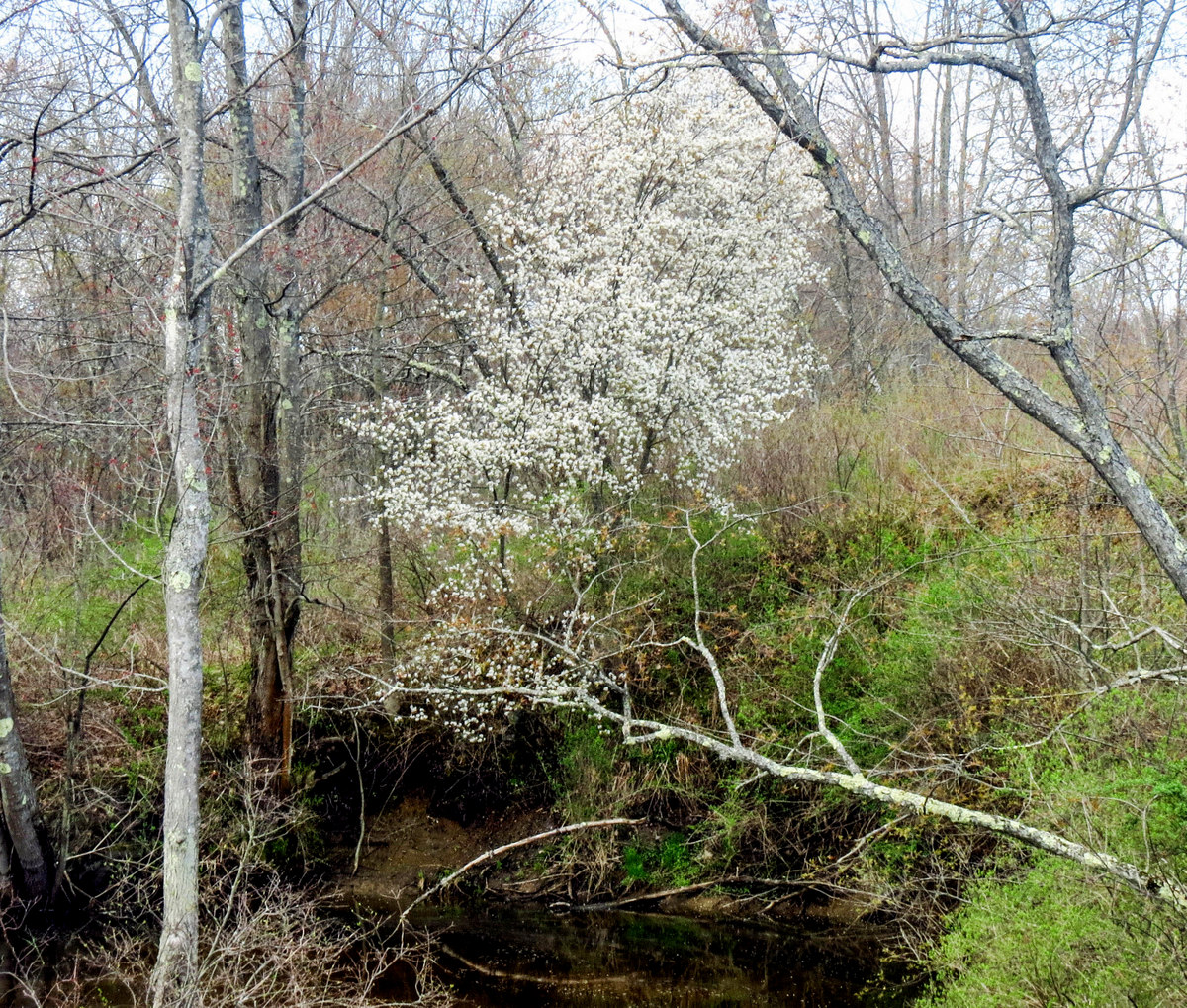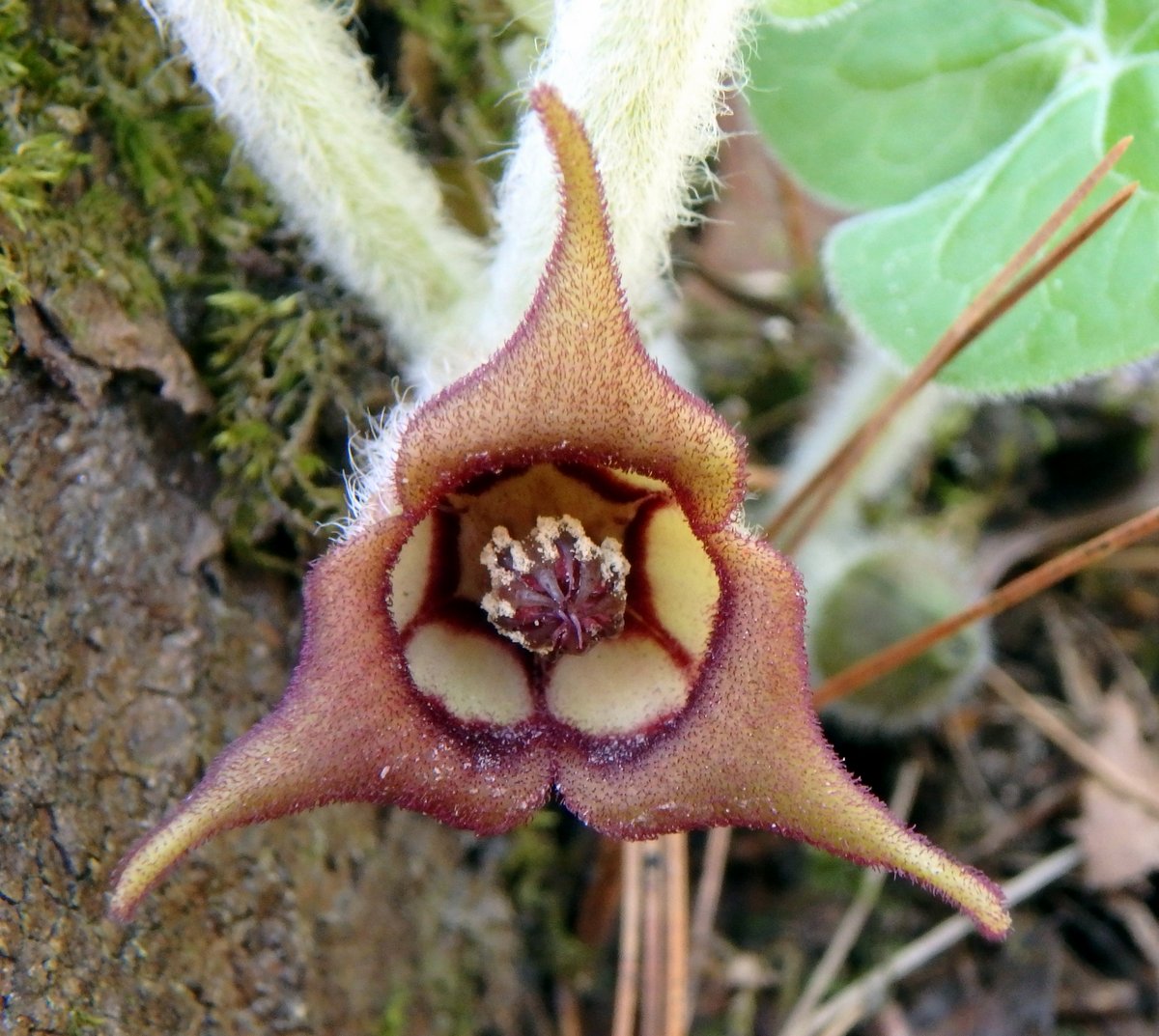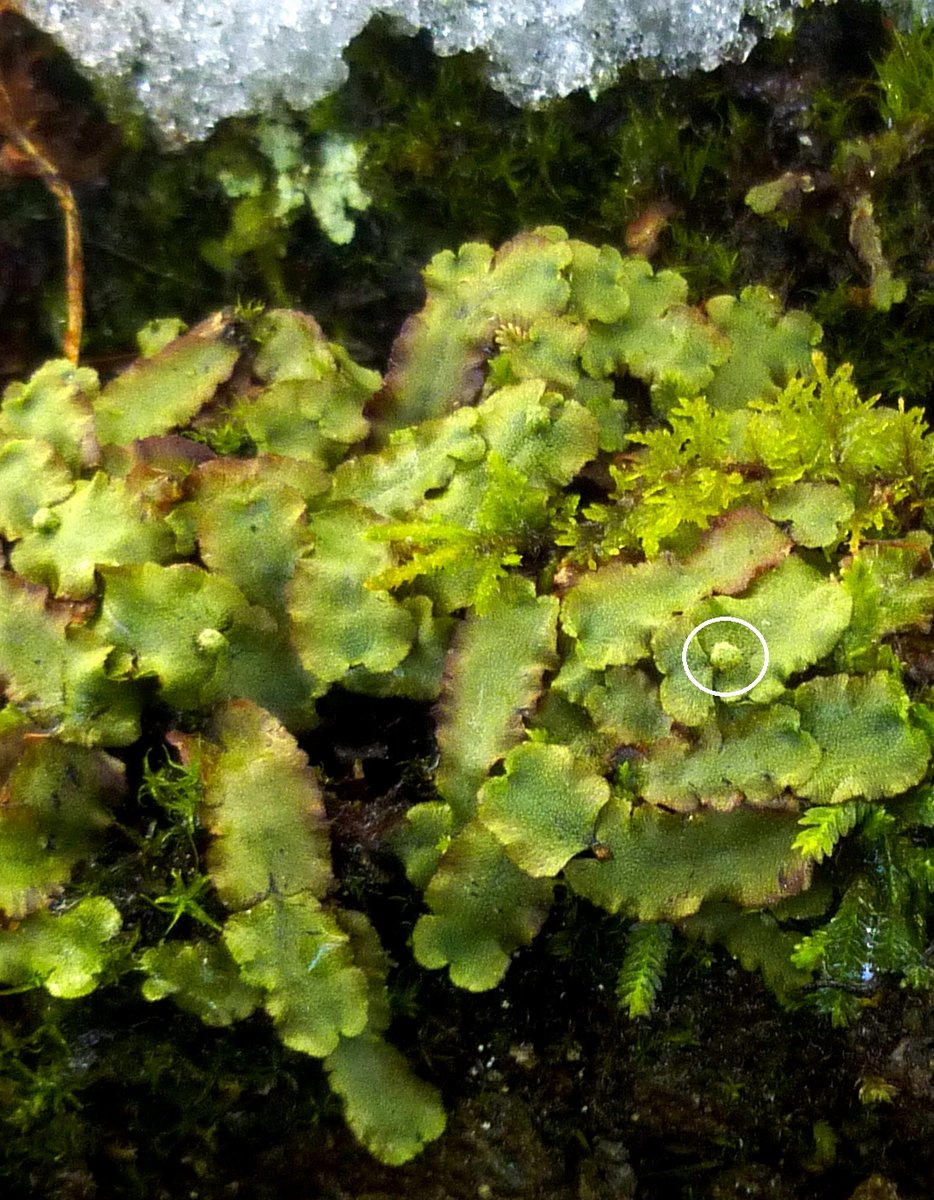
Last week a storm spun just off the coast and brought us wave after wave of clouds, rain, wind and cold almost every day. In spite of below freezing nighttime lows there were a few plants brave enough to bloom. Trailing arbutus (Epigaea repens) bloomed just in time for May and that’s perfect. It is called Mayflower because that’s often when its small white to pink, very fragrant flowers appear.

To smell its flowers you have to literally get your chin on the ground because these flowers are ground huggers. It’s worth it though, because they have a scent all their own that it is impossible for me to describe. Kind of spicy, but there’s more to it than that. It’s a very unusual scent and that’s why they were so over collected for use in nosegays in years past. My grandmother always told of this being her favorite flower but we never did find any of them, so I found myself wishing she were there on this day. Until I thought about it, that is. She had awful trouble standing from a kneeling position, so she would have told me to pick some and give them to her and I would have had to refuse. That wouldn’t have gone over well. In her day the thought of a flower becoming extinct from over picking would have seemed ridiculous, and she would have told me so. They just didn’t know any better in her day.

A flower I’ve never heard of being picked is that of wild ginger (Asarum canadense), but the plants are still hard to find. I’ve found them in only in this one spot.

The plant’s fuzzy, heart shaped leaves were just unfolding but the brownish flowers were already blooming. I can’t think of another wildflower with leaves quite like these so the plant is very easy to identify. The long rhizomes of wild ginger were used by Native Americans as a seasoning. It has similar aromatic properties as true ginger but the plant has been found to contain aristolochic acid, which is a carcinogenic compound that can cause kidney damage, so it should not be used.

You could fit a pea inside a wild ginger flower but nothing much bigger. Though flies often crawl into the meat colored flowers it is now thought that they do so simply to get warm. Several scientific studies have shown that these flowers are self-pollinated. That doesn’t make a lot of sense to me because I saw many insects including bees already out before these flowers bloomed. Maybe insects just aren’t interested for some reason.

I’m not happy with the way the river water in the background came out in this shot of leatherleaf blossoms (Chamaedaphne calyculata) but I got a difficult shot so maybe I should just keep quiet and be happy with it. The plant normally grows out of the water a few feet but it can stand being flooded and this year because the river was high, I couldn’t get near it. I stood on a slope just at the water’s edge getting as close as I could by leaning, which wasn’t a good idea. It grew a foot or two off shore and I almost leaned myself right into the river.

But I stayed dry and it was worth a slightly raised heart rate to get photos of such pretty little blossoms. I was able to get a hold of a branch on another shrub and pull it toward me for this shot. The plant gets its common name from its tough, leathery leaves, which are lighter and scaly on their undersides. At a glance it might be mistaken for a blueberry, but these flowers are smaller and not quite so round as a blueberry blossom.

If you see these shiny pointed bud scales littering the ground that means the poplars are blooming. When they bloom their catkins are often blown off or taken off by rain, and you can see one of them on the upper right.

If you pick up one of the fallen poplar catkins this is what you’ll see. These are the reddish-brown male anthers, which are extremely small. But they do the job and when the female flowers have been pollinated, they’ll release their cottony seeds into the air and they will settle on everything. It’s not a good time to leave your car windows open.

The feathery white female flowers of the European white elm (Ulmus laevis Pall), which we call Russian elm, were just forming seeds when I saw them. The tree is large and spreading and quite beautiful, but it lacks the height and vase shape of the American elm.

The female flowers of the American elm (Ulmus americana) were a step ahead of those of the Russian elm, and had already become seeds (samaras), each with a white fringe. They will quickly lose this fringe as they ripen.

One of my favorite native tree flowers are the female flowers of the box elder. The male flowers come out early before the leaves, but the female flowers don’t show themselves until the leaves unfurl. I love their color and shape. They have a sticky velvety coating so they can catch as much pollen as possible. They must be very good at it because you find these “weed trees” coming up in waste areas and vacant lots all over town. Box elder was the first tree I ever planted. My grandmother used to pay me to pull up all the trees growing around her foundation and one of those I pulled up was a box elder. I carried it home bare root, dug a hole and stuck it in, gave it some water and pretty much forgot about it, and that tree grew for years and years. For all I know it could still be there, some 55 years later.

For the first time I saw the flower stems (petioles) of female box elder flowers. I never knew this was such a hairy tree but I’ve always known how pretty it was, weed tree or not.

A rare thing has happened. Rare in this area anyhow; a downy yellow violet (Viola pubescens) has bloomed. This single plant is the only one I’ve ever seen. I thought it might be a round leaved yellow violet but the leaves are definitely heart shaped and not round.

It’s a very pretty thing and I was happy to see it. I can count on the fingers of one hand how many times I’ve seen a yellow violet.

Wild strawberries (Fragaria virginiana) have just come into bloom. These berries are small but you haven’t really tasted a strawberry until you’ve tasted them. The full moon in the month of June was known to many Native American tribes as the “Strawberry Moon” because that was when most strawberries began to ripen. The berries were picked, dried and stored for winter use, or added to pemmican, soups, and breads. In the garden strawberries easily reproduce vegetatively by runners (stolons) but the fruit was so plentiful in the wild that colonials in North America didn’t bother cultivating them until the early 1800s. The first documented botanical illustration of a strawberry plant appeared in 1454.

Sessile leaved bellwort (Uvularia sessilifolia) has just come into bloom and only three or four out of thousands had opened when I went to see them. It was a windy day and you can tell that by the way this flower isn’t hanging vertically. I doubted I’d be able to get a shot but the camera stopped the motion and this is the result. The black flies are out in force now but the wind keeps them away, so I should have been grateful for it instead of grousing about it while there on my knees waiting for it to stop so I could get a photo. You never have to search too hard to find something to be thankful for, but sometimes I miss the opportunity.

I went to see what American hazelnut buds looked like when they broke but instead found this one still flowering. I was surprised because the male catkins have turned brown and dried up. These were the longest female filaments I’ve ever seen and I wondered if maybe they grew longer by stretching for pollen that will never come. I see a lot of hazelnut shrubs with no nuts on them in the fall and now I wonder if it is because many female flowers don’t appear until after all the pollen has been shed. In the end it doesn’t matter. Nature will straighten it out.

After a very slow start henbit (Lamium amplexicaule) is having a great year. This plant was loaded with cartoon faced blossoms that resemble those of some of our small flowered orchids.

You might see a resemblance to henbit in the much larger flowers of dead nettle (Lamium maculatum) and well you should, because they are both in the same family.

Bradford pear blossoms (Pyrus calleryana) are pretty enough but they’re about all this tree has going for it. They have weak wood and lose branches regularly and birds love the tiny pears it produces, which means that it is quite invasive. In the wild it forms nearly impenetrable thickets and out competes native trees. And though the flowers are pretty enough their scent has been compared to everything from rotting fish to an open trash bin. I smelled fish when I was walking among them taking photos and I can say that I was very happy that I didn’t have one in my yard.

Pulmonaria (Pulmonaria officinalis) has just started blossoming, but I’ve never seen one like this. It had two colored flowers on the same plant, pink and blue / purple. I’m guessing that they come out pink and then change but I’ve never noticed this before so I wonder if it’s a newer hybrid. Another name for the plant is lungwort. During the Middle Ages in Europe, lungwort was considered dangerous because the grey spots on its leaves were associated with an infected lung. Later, it was used to treat lung disorders. The scientific name Pulmonaria comes from the Latin pulmo, meaning lung.

Tulips of all colors and shapes have appeared.

I was looking for the very early red and yellow tulips I saw last year but I never did find them, so these will have to do. There was less yellow on the ones I saw last year. It just peeked out between the red petals.

It’s time to say goodbye to red maple flowers because they have grown wings, and now they will fly. The trees have blossomed longer this year than I’ve ever seen, most likely due to a cool spring.
I tried to draw my soul but all I could think of was flowers. ~Natalya Lobanova
Thanks for coming by. I hope everyone is seeing lots of flowers!







































































































































































